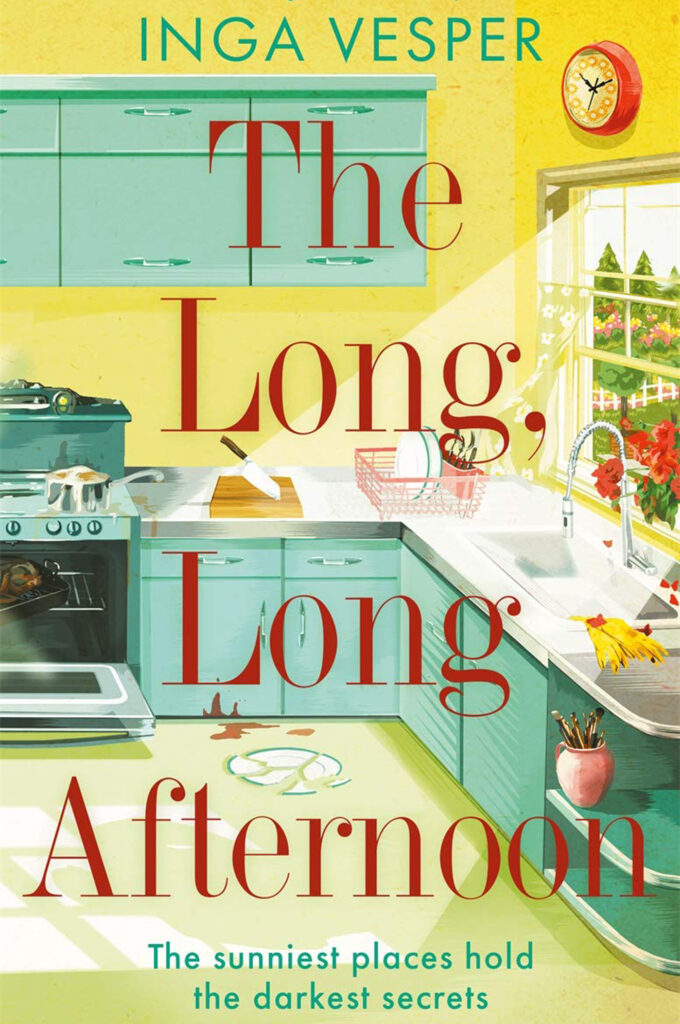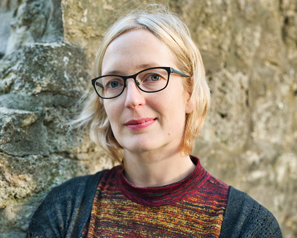Inga Vesper, The Long Long Afternoon (2021)
Review by Lee Horsley

Inga Vesper’s The Long Long Afternoon is a beautifully atmospheric and wholly absorbing crime novel, set in 1950s Santa Monica. Vesper’s title conjures up the placid, unbroken calm of a Californian idyll – a sun-drenched suburban life, where affluent housewives display their domestic accomplishments, their blue pools, their May-green lawns. But – as any reader of Chandler will suspect – we will inevitably discover that underneath this claustrophobic, carefully constructed surface there are hidden lies, transgressions and bloodstains on the kitchen floor:
“The sun beams through the curtains and paints the ghosts of daisies on the tiles. Blood on them, too, smeared and sticky, dreadful as the devil’s tongue.”
Joyce Haney, suburban wife and mother of two, has vanished from her Sunnylakes home, leaving her little girls behind. Has she been abducted? Or murdered? The blood in the kitchen is discovered by the Haney’s black maid, Ruby Wright, who travels daily to the suburbs from the other side of Santa Monica, hoping to earn enough to pay her tuition at teacher training college. Ruby’s acute intelligence goes unobserved in Sunnylakes, because, to her employers, she is invisible – merely the hired help. But when Mick Blanke, the detective investigating Mrs Haney’s disappearance, asks whether Ruby can give him any information, he finds that her sharp perceptions lead him towards an understanding of what has happened.
Struggling to make headway with his interrogation of suburban wives, Blanke feels like he’s “surrounded by sharks in starched blouses”. Ruby explains to him,
“’The Sunnylakes folk, they live in dreamland. And they don’t want anyone popping that bubble. They . . . play-pretend. You must have noticed.’ ‘Yeah . . .’ He frowns. ‘Kinda.’ ‘So you gotta stop expecting them to help you and start digging at the deep, dark secrets that they’ve got.”
The “the dark stuff, that stays hidden” is only gradually brought to the surface in a narrative that moves back and forth in time, giving us the perspectives of Ruby, Joyce and Mick. Both Joyce and Ruby have been thwarted in their lives by misogynistic assumptions and prejudice; both have longed to do things outside of conventional expectations. Before Joyce goes missing, they reach across the barriers to find hidden affinities. As they confide in one another, Joyce suddenly gives Ruby a hug, and Ruby reflects that she
“…had never been hugged by a white woman, but she didn’t even have time to be surprised, because Joyce told her a secret so big it bonded them forever…Joyce’s and her life were so far apart the gap could never be bridged. But they had stuff in common, too. Things they both wanted and couldn’t get. Dreams that kept going unfulfilled.”
The Long Long Afternoon is an engrossing mystery story, but also a penetrating exploration of both racial barriers and the position of women in a society that traps and stifles them. Before her disappearance, Joyce thinks about the unexpected bond she has formed with Ruby:
“We have some laughs together, her and I, and we’ve cried together, too, over our mothers who were killed by men who saw them as trash. I told Ruby things I never told anyone. That she does not have to forgive, that she should be angry over the injustice of it all. That she is allowed to hate.”
Inga Vesper’s remarkable debut novel is thoughtful, wonderfully crafted and highly recommended.

